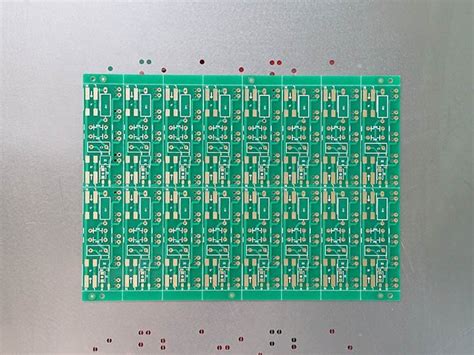What is an FR4 PCB?
FR4 PCB, also known as Flame Retardant 4 Printed Circuit Board, is a type of PCB material that is widely used in the electronics industry. It is made from a composite material consisting of woven fiberglass cloth with an epoxy resin binder that is flame resistant. FR4 PCBs are known for their excellent mechanical, electrical, and thermal properties, making them suitable for a wide range of applications.
Composition of FR4 PCB
The composition of FR4 PCB includes:
| Material | Description |
|---|---|
| Fiberglass cloth | Provides mechanical strength and dimensional stability |
| Epoxy resin | Acts as a binder and provides insulation and flame resistance |
| Copper foil | Used for creating conductive traces and pads |
Properties of FR4 PCB
FR4 PCBs exhibit the following properties:
| Property | Description |
|---|---|
| High mechanical strength | Resistant to bending, twisting, and impact |
| Excellent electrical insulation | High dielectric strength and low dielectric loss |
| Good thermal stability | Operates well in a wide temperature range |
| Flame retardant | Self-extinguishing and resistant to burning |
Advantages of FR4 PCB
1. Durability and Reliability
FR4 PCBs are known for their durability and reliability. They can withstand high mechanical stress and are resistant to impact, vibration, and thermal shock. This makes them suitable for use in harsh environments and applications that require long-term reliability.
2. Excellent Electrical Properties
FR4 PCBs have excellent electrical properties, including high insulation resistance, low dielectric constant, and low dielectric loss. These properties make them suitable for high-frequency applications and help to minimize signal loss and interference.
3. Cost-Effective
Compared to other PCB materials, FR4 is relatively inexpensive. This makes it a cost-effective choice for many applications, especially those that require large quantities of PCBs.

Manufacturing Process of FR4 PCB
The manufacturing process of FR4 PCB involves several steps:
-
Design: The PCB design is created using CAD software, which includes the layout of the conductive traces, pads, and other features.
-
Lamination: The fiberglass cloth is impregnated with epoxy resin and then laminated with copper foil on one or both sides.
-
Drilling: Holes are drilled through the laminated board to allow for the insertion of components and VIAs.
-
Patterning: The copper foil is patterned using a photoresist and etching process to create the conductive traces and pads.
-
Surface Finishing: A surface finish, such as HASL (Hot Air Solder Leveling) or ENIG (Electroless Nickel Immersion Gold), is applied to protect the copper traces and pads.
-
Solder mask and Silkscreen: A solder mask is applied to protect the PCB from oxidation and short circuits, and a silkscreen is used to add text and symbols for identification.

Applications of FR4 PCB
FR4 PCBs are used in a wide range of applications, including:
- Consumer electronics (e.g., smartphones, laptops, televisions)
- Automotive electronics (e.g., engine control units, infotainment systems)
- Industrial control systems
- Medical devices
- Telecommunications equipment
- Aerospace and defense systems

Comparison with Other PCB Materials
FR4 PCBs are often compared with other PCB materials, such as aluminum-based PCBs and polyimide PCBs. Here’s a comparison table:
| Property | FR4 PCB | Aluminum PCB | Polyimide PCB |
|---|---|---|---|
| Thermal conductivity | Low | High | Low |
| Electrical insulation | Excellent | Poor | Excellent |
| Mechanical strength | High | Moderate | High |
| Cost | Low | High | High |
| Application | General-purpose | High-power, heat-sensitive | High-temperature, flexible |
FAQs
1. What does FR4 stand for?
FR4 stands for Flame Retardant 4, which refers to the flame-resistant properties of the PCB material.
2. Is FR4 PCB suitable for high-frequency applications?
Yes, FR4 PCBs have excellent electrical properties, including low dielectric constant and low dielectric loss, making them suitable for high-frequency applications.
3. Can FR4 PCBs be used in harsh environments?
Yes, FR4 PCBs are known for their durability and can withstand high mechanical stress, impact, vibration, and thermal shock, making them suitable for use in harsh environments.
4. How does the cost of FR4 PCB compare to other PCB materials?
FR4 PCBs are relatively inexpensive compared to other PCB materials, such as aluminum-based PCBs and polyimide PCBs, making them a cost-effective choice for many applications.
5. What surface finishes are commonly used on FR4 PCBs?
Common surface finishes for FR4 PCBs include HASL (Hot Air Solder Leveling), ENIG (Electroless Nickel Immersion Gold), and OSP (Organic Solderability Preservative). The choice of surface finish depends on the specific application requirements.
Conclusion
FR4 PCB is a versatile and widely used PCB material in the electronics industry. Its excellent mechanical, electrical, and thermal properties, along with its cost-effectiveness, make it a popular choice for a wide range of applications. Understanding the composition, manufacturing process, and advantages of FR4 PCBs can help engineers and designers make informed decisions when selecting PCB materials for their projects.

Leave a Reply